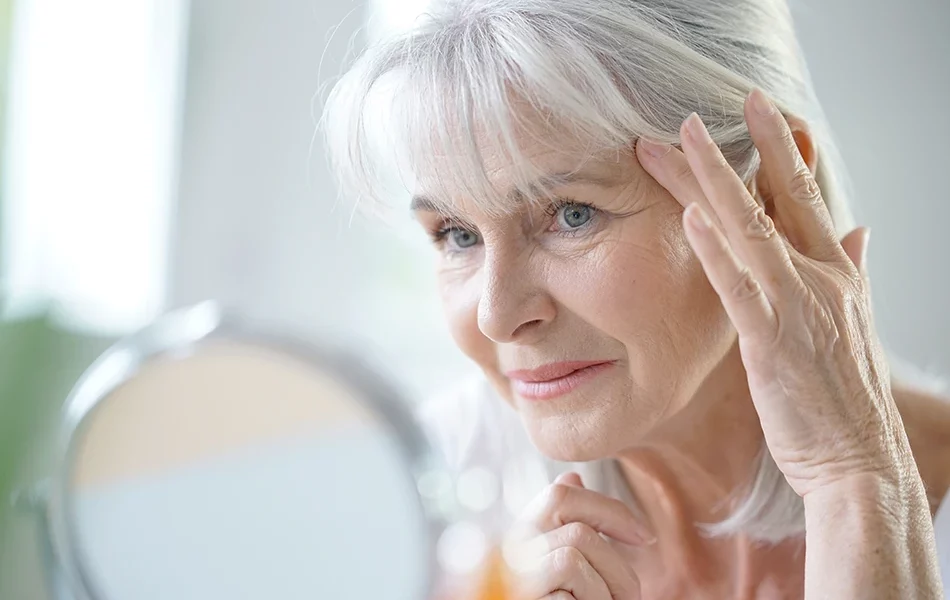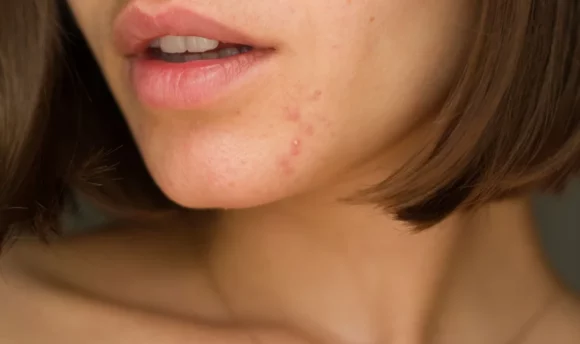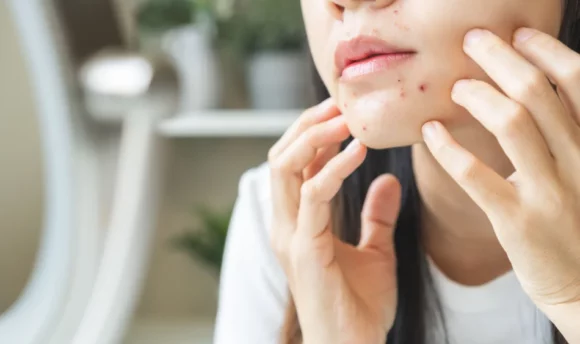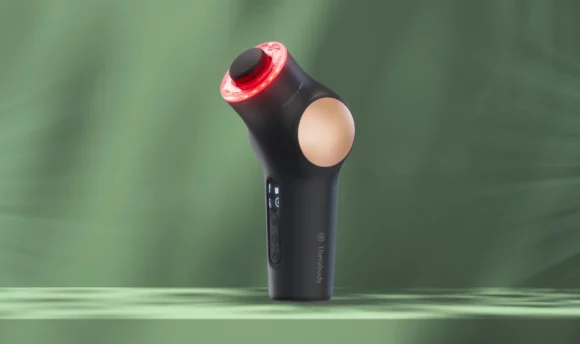Crow's Feet: Causes, Prevention, and Best Remedies
Learn why we develop crow’s feet, how to prevent them, and minimize their appearance.

Wrinkle formation is a part of life. As you age, you might notice fine lines and wrinkles beginning to appear on your face and body. One common location is the outer corner of your eyes. These wrinkles typically appear with different facial expressions, like smiling and frowning.
While it’s perfectly natural, you might prefer the appearance of clearer, smoother skin. Luckily, you can do a few things to prevent the early onset of facial wrinkles and to minimize the appearance of those already there.
But first of all, what are these particular fine lines and wrinkles?
What Are Crow’s Feet?
Crow’s feet, also known as lateral canthal lines, are fine lines and wrinkles in the outer corners of your eyes. They form due to facial expressions, primarily those that cause you to naturally squint your eyes, such as when laughing, crying, or shielding from the sun.
When you form a facial expression, a tiny muscle contraction occurs in the outer corner of the eyes. At this stage, they are dynamic wrinkles that fade just as quickly as they appear.
Gradually, dynamic wrinkles become static wrinkles, meaning these fine lines remain on your face even when you’re not making any facial expressions. They may also deepen and worsen over time.
It’s not only facial movements that result in expression lines. Biological processes and environmental factors contribute to crow’s feet. Although aging is inevitable, you can prevent and treat crow’s feet if you find them problematic.
When Do Crow’s Feet Start to Appear?
Most people notice crow’s feet in their thirties. However, depending on your skin health, you might only witness them when you enter your forties. For others, it’s not uncommon to experience premature aging, with crow’s feet appearing as early as twenty years of age.
How soon you get them depends on a handful of variables. Repetitive squinting, frequent sun exposure, and a poor skincare routine may contribute to the early onset of crow’s feet.
What Causes Crow’s Feet?
The decrease of collagen and elastin fibers in your skin is the main culprit behind crow’s feet. As collagen production declines, the skin’s structure begins to weaken. This causes the skin to lose elasticity and firmness, making it more prone to thinning and wrinkling.
Your everyday facial expressions lead to more prominent fine lines and wrinkles around the eyes that would previously have faded away. Again, this is simply your body’s natural response to aging.
Interestingly, there are other precursors to crow’s feet. Many everyday behaviors can speed up the aging process and contribute to those fine lines, which is why some people develop lateral canthal lines sooner than others. These include:
- Sun exposure: Exposing your skin to the sun’s ultraviolet rays can trigger the formation of wrinkles. According to studies, UV rays are responsible for 80% of visible facial aging signs.
- Not wearing sunscreen daily: Again, exposure to UV rays without sun protection can visibly age the skin.
- Not eating a healthy diet: A lack of nutrients in your diet can lead to poor skin health. Moreover, too much sugar can increase inflammation and speed up wrinkle formation.
- Smoking: Smoking damages the skin and increases your risk of premature facial wrinkling.
How to Prevent Crow’s Feet? 4 Useful Tips
It’s better to work on preventing crow’s feet before it’s time to treat them. Here are 4 effective strategies to slow the appearance of crow’s feet that you can easily add to your daily routines.
#1 Use SPF daily and avoid direct sun
Sun exposure is a massive culprit behind facial wrinkles, including crow’s feet. You should wear sunscreen daily to protect your skin from the sun’s harmful UV rays, selecting a broad-spectrum SPF that protects against UVA and UVB rays.
Limiting sun exposure and avoiding placing your skin in direct sunlight is also necessary. Chronic sun exposure causes photoaging, where the sun prematurely ages the skin. The common trait among photoaged skin is damage to the collagen and elastin fibers.
The result is crow’s feet and other fine lines and wrinkles occurring sooner rather than later.
#2 Wear sunglasses
Perhaps the easiest way to prevent squinting during the day and simultaneously prevent crow’s feet is to wear sunglasses. Sunglasses protect your eyes from the sun’s powerful UV rays. Remember, selecting a style that provides adequate UV protection is critical.
As well as preventing squinting, shielding yourself from UV light will help you maintain healthy eyes while preventing harmful free radicals from damaging the fragile, sensitive skin zones around your eyes.
Sunglasses are effective, but they’re only one means of protection. They do not block ultraviolet radiation (UVR) altogether, so combining them with other methods to limit UV exposure is best, like wearing a wide-brimmed hat.
#3 Start using retinol and peptides
It might be time to spruce up your skincare regimen by adding retinol and peptides.
Retinol is a game-changing ingredient for the skin. It’s a type of retinoid made from vitamin A – an approved anti-wrinkle agent that can transform the skin’s surface appearance. Retinol penetrates deep into the outer layer of your skin. When it reaches the middle layers, it helps neutralize free radicals and stimulate collagen production to create a plump, younger look.
Peptides are short chains of amino acids your body makes, but you can find them in skincare products. These topical creams and gels signal skin cells to build collagen and elastin. In turn, it helps to prevent the appearance of fine lines and keeps your skin looking youthful.
Be gentle and cautious when applying eye creams, as the crow’s feet area is home to particularly delicate skin.
#4 Follow a clean diet
Poor dietary choices can result in poor skin health. No diet can completely stop the aging process in its tracks, but providing your body with good nutrition will make way for overall healthier skin.
Getting vitamins, minerals, and antioxidants into your system from food can help ward off free radicals that damage your skin cells. This internal damage can result in visible damage via fine lines and wrinkles, so eating well and fueling your body with goodness is essential.
You could choose foods that nurture collagen production. For example, protein-rich foods from animal and plant sources contain crucial amino acids that promote collagen production. Examples include bone broth, chicken, eggs, legumes, and fish like salmon and sardines.
Vitamin C is another critical source, which you can get from consuming citrus fruits, chickpeas, berries, and dark leafy green vegetables.
How to Get Rid of Crow’s Feet? 3 Options to Consider
If crow’s feet make you unhappy or self-conscious, you might wish to consider possible treatment options. Here are three ways:
#1 Get a chemical peel
Chemical peels can help to treat crow’s feet since they restore a more youthful appearance to aging skin. A chemical peel is a technique that involves applying a chemical solution to the face to eliminate old skin cells and make way for the growth of new healthy cells.
There are different types of chemical peels, categorized as superficial, medium, and deep peels. Deeper peels are longer-lasting but have more risks and adverse side effects.
#2 Try botox
Botox injections are popular beauty treatments and an effective treatment option for crow’s feet. Botox (botulinum toxin) is an anti-wrinkle solution because it blocks muscle contractions in the face and relaxes the muscles to prevent wrinkle formation while smoothing out existing wrinkles.
#3 Consider laser resurfacing
Laser resurfacing is an intense treatment option that uses a laser beam to destroy the epidermis (the outside layer of your skin). Meanwhile, it heats the deep layers of the dermis (the skin’s inner layer) to stimulate collagen production.
It can permanently decrease the visibility of crow’s feet and other signs of photoaging.
How to Conceal Crow’s Feet?
Crow’s feet are a natural part of aging skin, and while you might embrace them, there might be times when you want to create a smoother appearance.
If that’s the case and you don’t want to go down the route of cosmetic procedures, you can do a few things to reduce and even mask the appearance of crow’s feet and other fine lines.
You can try the following practices and see how they work for you:
- Moisturize daily: Moisturizing can temporarily plump the skin, making those dynamic lines less noticeable.
- Use a high-quality primer before applying makeup: It may help to conceal fine lines and create a smoother surface for makeup application.
- Apply a high-quality concealer: A good concealer targets the eye area and helps disguise crow’s feet.
- Use a light or medium coverage foundation: Heavy makeup clings to the skin and worsens the appearance of fine lines and wrinkles.
- Avoid makeup that highlights the eyes: Bright eyeshadow, thick mascara, and false eyelashes will draw attention to your eyes, making your crow’s feet more visible.
- Skip the loose powder: Loose powder can accentuate crow’s feet as it tends to settle into any facial lines you have.
FAQs
Most people begin to see crow’s feet appear during their thirties, as the rate of collagen breakdown naturally increases and collagen synthesis decreases. The decline in collagen and elastin occurs more quickly when you reach forty and fifty years of age.
Many 30-year-olds have crow’s feet. In fact, this is the most popular decade for crow’s feet to occur due to the body’s processes naturally slowing down as you age. Some people with signs of early skin aging may develop crow’s feet in their twenties.
In most cases, it isn’t possible to get rid of crow’s feet entirely. However, you can significantly reduce their visibility with cosmetic procedures, such as botox injections, chemical peels, laser resurfacing, or a combination of treatments performed by a licensed dermatologist.
Botox is an effective way to treat crow’s feet. It works by relaxing the facial muscles surrounding the eyes, helping smooth out fine lines and wrinkles to reduce their visibility.
A Word From a Dermatologist
Everybody has skin complaints, from loose skin to eye bags and dark circles. Crow’s feet are another common complaint that leads people to seek professional support. These wrinkles form around the eyes and can become more distinctive over time.
Most of us will get crow’s feet eventually, but you can slow their development by taking good care of your skin. Simple daily practices like applying sunscreen before your morning walks and wearing sunglasses and hats when outdoors can protect the eye area from harm.
A solid skincare routine that includes daily moisturizing, regular exfoliation, retinol, and peptides can keep your face looking its best. And if you want to boost your skin health from the inside, the trick is to prioritize nutrition with a well-balanced diet and sufficient water intake.
As you implement new habits, remember to cut out bad ones. Quit smoking, avoid tanning beds, and limit direct UV exposure to boost your skin health.
Conclusion
Almost everyone will develop crow’s feet and other facial wrinkles in their lifetime. You might dislike the idea, but you can take comfort in knowing that they ultimately symbolize the many emotions you’ve experienced as a human being; happiness, sadness, anger, and grief.
You can do plenty of things to prevent their early arrival, and if you have them already, you can consider treatment options. Wrinkles are harmless, but they can influence your self-confidence. Talk to your doctor if crow’s feet are harming your well-being.

















































 Select your language:
Select your language: 








